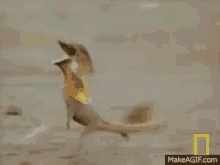

This is because these animations were homemade with whatever equipment the artists could find.

It may seem a little counterintuitive, but the crudeness of early internet animations is what made them so endearing in the first place.

Memorable quote: what else? “Don’t you know who I am? I’m the juggernaut, b*tch!” As for My Way Entertainment, they are still active and posting on their own channel. By the end of the year, however, the video was removed from YouTube due to copyright issues with Marvel, but it was later uploaded in 2007 by another user, where it has garnered 8.8 million views. In the live-action X-Men film X3: The Last Stand, the Juggernaut says the line while fighting Kitty Pryde. The video quickly went viral and was so popular that it made it to the silver screen. Per their website, the parody dub was created in 2005 to kill time and wasn’t unleashed to the internet until 2006, when they posted the video on their YouTube channel. In the video, we see Randy voice the titular Juggernaut character as he fights Charles Xavier and friends while uttering profanity-laced and sometimes nonsensical lines, including the oft-quoted “Do you know who I am? I’m the juggernaut, b*tch.” Both make a strong showing in the video “I’m the Juggernaut B*tch.” Uploaded to YouTube in 2005 by Xavier Nazario and Randy Hayes of My Way Entertainment, the video was a dub of an episode of the 1992 X-Men animated series. Two main staples of early internet humor are profanity and randomness. Memorable quote: Oogachacka! 9 I’m the Juggernaut B*tch As for me, I credit the Dancing Baby with reinvigorating Robert Downey Jr.’s career via Ally McBeal.
Green screen snake gif upgrade#
The Dancing Baby has popped up here and there over the years, mostly as a form of nostalgia for the ’90s, but the original gif has been treated to a hi-def upgrade and developed into an NFT. The spread of the Dancing Baby was unprecedented at this point and is arguably one of the first examples of something going viral. The Dancing Baby blazed its way through all corners of the internet before appearing on news channels, in commercials, and ultimately in the hit comedy Ally McBeal, where the Dancing Baby appears to Ally as a vision representing her ticking biological clock.

Eventually, the animation was paired with the intro to Blue Suede’s “Hooked on a Feeling,” and the Dancing Baby exploded in popularity. From its inception in 1996, the animators knew they had something that was both spooky but impossible to stop looking at.
Green screen snake gif software#
The origins are a little murky, but the animation is credited to a group of animators (Michael Girard, Robert Lurye, Tony Morril, and John Chadwick) who were working on a project called Biped that involved the popular 3D animation software Character Studio. Perhaps the most ’90s thing to ever exist, the dancing baby, was an early 3D animation of a baby doing a cha-cha style dance. Related: 10 Of The Most Bizarre Modern Internet Trends 10 The Dancing Baby So if you’re here to learn about the early days of the internet or just looking for some nostalgia from a bygone time, here are 10 influential early web animations.
Green screen snake gif cracked#
In fact, some of these early internet animations were so viral that they cracked through the computer screen and made it as far as the silver screen. The feelings generated by these animations, followed along with the infectiously quotable dialogue, created a one-two punch of virality that helped to usher in the meme-age. They also managed to intertwine juvenile humor with dark subject matter and often had a finger on the pulse of what the ordinary person in that era found both humorous and frightening. They were also surreal, funny, and highly quotable. Typically created in Adobe Flash, these animations were crude, profanity-laced, and often violent. It was content created by the everyman for the everyman.Ī popular vehicle for spreading humor in those days was animation. When the internet hit the mainstream in the 1990s, users were met with the idea of being able to create and share their own projects outside of the confines of major media outlets. What about spreading humor? Today, memes are the main currency of the internet, providing humor and virality in often unpredictable ways, but it was not always that way. Seriously, imagine having to fill out tax forms by hand and mail them or look at an actual map to travel to unknown destinations.


 0 kommentar(er)
0 kommentar(er)
